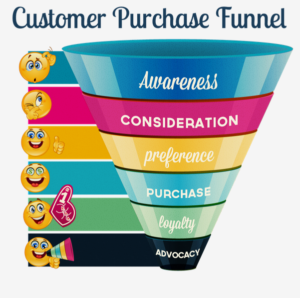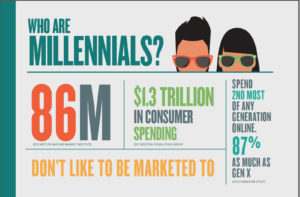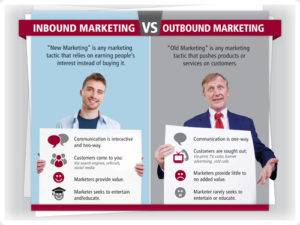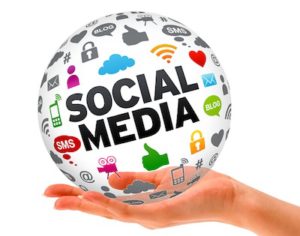[vc_row][vc_column][vc_column_text]Holiday Marketing has already begun to make headway and the end of the year is quickly approaching. Many businesses are beginning to look over their fiscal year. Sometimes changes need to be made, and with advertising taking on both a traditional and non-traditional approach, it can be hard to decipher which works best for your company.
IndiVisual Creations decided to come up with a checklist to help you. We created 30 ideas that we hope will further strengthen your customer relations and gain a greater reach in the new year!
There’s only 2 month and a half left of the year, and now is the perfect time to reflect on last year and start planning ahead.
- Online Sales: Value-Driven Call to Action Offers: This can help promote discounts and specials that catch the eye of your customer and can be very influential to their purchases.
- Packaging: Supply something free within a package to help up-sell an event, promotion or product.
- Promo Codes: Offer your customers a chance to get discounts for the holidays, or throughout the year. Promo codes help track your advertising and also make the discount only available to those you advertise to.
- E-mail Marketing: Are you utilizing your e-blasts to their fullest extent? You can use more aggressive tactics in e-mail marketing to provide exclusive offers to your opt-in subscribers. This is a great way to stand out from your competitors.
- Building Databases: Databases are a great ways to reach specific people and can even build relationships. Customization is key during this process, so be sure to spend the extra time maintaining them. You could even create a database of customers that have been with the company for years and create exclusive discounts and offers to show that you appreciate them.
- Cross-promote E-mails and Social Media: This is a great way to get people on your Facebook page. You can offer coupons and discounts that will be given if the customer “likes” your page
- Social Media Outreach: When planned and executed well, can be an excellent means of generating leads and demand.
- ABC’s of Social Media:
A.) Solid First Impression: Have Clarity, Consistency, Balanced emotion and logic, Usefulness (at least 50% of your posts must be directly useful to your audience)
B.) Content Promotion: Craft the perfect descriptions (with hashtags to attract your audience), Time you Publishing Right (when the maximum number of your audience members are on the social media platform), Target your content right (through relevant social media groups), Create an emailing List (Share your social media content via email on a regular basis (every week, every two weeks or each month), and use social plug ins for easy sharing.
C.) Getting Introduced: When implementing a marketing strategy on social platforms, it’s important to give just as much attention to fostering relationships as most businesses generally give to creating and distributing content. Since LinkedIn has a system for introductions, you can leverage that to make the right connections. - Connecting on Social Media: People working in the same industry as you are, people in the same company, and people whose job descriptions match yours are the obvious ones. Based on the audience your business is targeting, you could extend your reach beyond those categories (to your high value target audience).
- Contests: Facebook contests are a fun way to create some excitement on your Facebook page. Customers can enter into the contest for their chance to win a free pass to your park or a free dinner out with the family. It’s a great way to keep your customers engaged, increase your likes, and put your company in the spotlight.
- Groupon: Groupon and sites like it provide a unique way to promote a product or service to the community. It provides an extensive reach so you can connect with customers who may not know about your company.
- Business Partnerships: Mass Distribution Promotional Campaign: This is a great way to spread the word about your business, and can be used to offer promotional discounts. Focusing on partnering with businesses that have multiple units is a good approach, that way you get more out of your partnership. 20 locations x 6000 guests per week x 3 weeks = 360, 000 impressions!
- Tourism Partnerships: Lodging Facilities: Pitch your product to a lodging community. When visitors come to a new area they want to know what they can do while they stay on vacation. Put your business in the spotlight with this partnership.
- Media Partnerships: Third Party Promotion or Event: Competitions with winning prizes draw a lot of attention. Publications and radio outlets can give you free ”ad” space in their print issues or online sites in exchange for the value of the actual prize to be won.
- Community Partnerships: Big Giveaway: This is a great way to build partnerships with other businesses in your community. Each of you can offer a free promotional item, like a free dinner or 2 night stay at a certain location. This creates a lot of excitement for your business and the ones you decide to partner with. It can be a collective effort, and is very beneficial.
- School Partnerships: Get Involved in Various Programs: Promote your business while also showing your support for education. By partnering with school programs you can offer rewards, prizes, group packaging and help with fundraisers.
- Fundraising: Hold a Fundraiser at your Location: Designate a day or night at your facility where a portion of the proceeds collected will go back to helping a non-profit in your community.
- Charity Tie-in: If you have a special event going on you can collect a donation which will go directly to a charity that you partner with. This will give you media exposure, create goodwill and expand your audience.
- Special Events: Create a Contest: Contests are good to promote a new product or even revive an existing product by creating excitement that revolves around it.
- Appreciation Based: Show appreciation to different groups in your community by offering an exclusive discount on a specific day. Support your teachers and even your local police, fire fighters, doctors, or military.
- Employee Appreciation: Show your employees how much you care by providing a specific day where they can receive discounted prices.
- Character Appearances: Create some excitement at your location with some fun-loving characters. You can hold a breakfast at your facility, where a character will appear and greet guests. This can help promote a new game, and create stronger branding for your company.
- Create a Holiday: Whether you’re celebrating the anniversary of your company or trying to promote a new product, creating a holiday with discounted prices will create a lot of excitement and further enforce your branding efforts.
- Create Packages for Existing Holidays: Is an easy opportunity to share specials with your customers on a day that they’re looking for something fun to do on their day off. President’s day, Martin Luther King Jr. Day, Easter, Memorial Day, and Labor Day are just a few holidays that offer an opportunity to promote special price points. Embrace the 3-day weekend!
- Holiday Marketing: Cyber Monday: This is the new Black Friday for many shoppers looking for a great deal. Put your specials online, and draw your customers in. T he best part is most of your customers are already looking for great savings, so make your specials stand out from your competitors.
- Gift-Card Promotions: Gift-cards are a popular present during the holidays, and many businesses offer their customers a discount when they spend money on a gift card. For example, if a customer spends $100 on a gift card they will receive a $25 dollar gift card free.
- Past Party Participants: Keep in contact with customers who have held a birthday party at your location by reaching out to them through monthly direct mail or through an e-mail campaign.
- New Potential Partiers: Create an offer to draw in new customers. Give them a free pass on their birthday and make them feel extra special.
- Party Giveaways: Get in contact with your local radio stations, publications, schools, Facebook fans, and other businesses to promote a free birthday party to one lucky winner. You can also use e-mail blasts to help reach your audience and provide a wider reach.
- Online Party Reservations: This provides a convenient way for your customers to book a birthday party, and you can list the different types of parties you offer with pricing. This provides an organized way to keep track of your reservations, and paints a picture for your customer. An online reservation system can also be used to help book large group events.
- Media Kits: Impactful Presentation: Media kits are a great way to create a lasting impression and also highlight what makes your business unique. They can be used for many different promotional opportunities and are a great way to explain what your company offers. You can include your operating schedule, brochure, fun facts, contact information, company overview and previous press releases.
[/vc_column_text][/vc_column][/vc_row]








